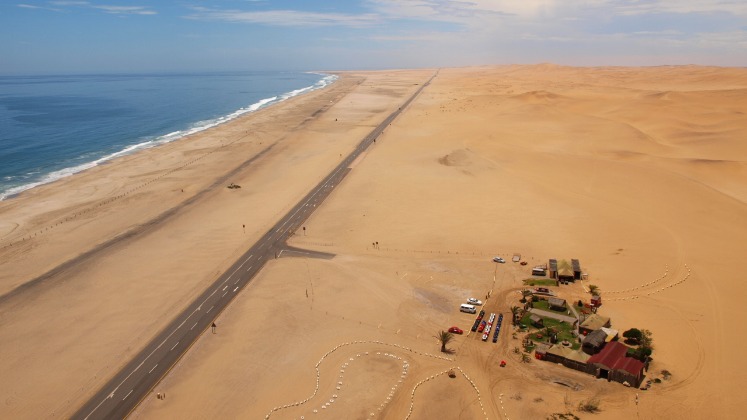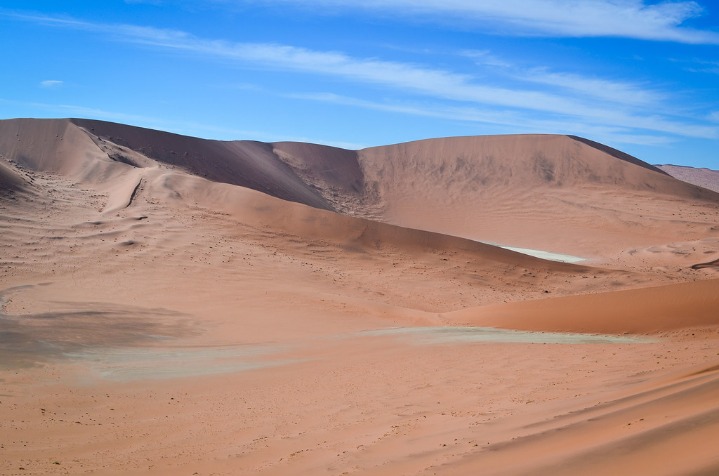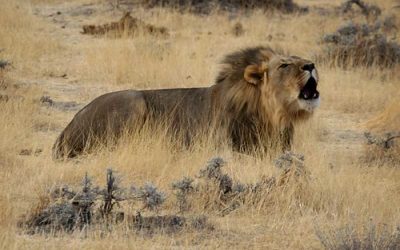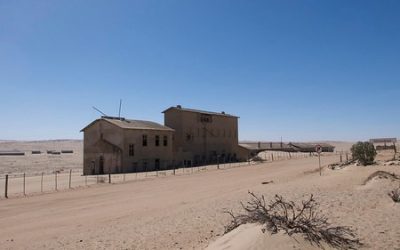Geographical Overview of Namibia
Namibia, a country located in southwestern Africa, is renowned for its diverse and striking landscapes. Its geographical features include vast deserts, rugged mountains, and expansive savannas. The country’s arid climate and unique terrain create an environment that is ideal for the formation of iconic sand dunes. These towering dunes are some of the most spectacular natural formations in the world, attracting visitors and researchers alike. Namibia’s distinctive geography plays a crucial role in shaping its remarkable sandy landscapes and diverse ecosystems.
Location and Size of the Dunes Area
Namibia is a country located in southwestern Africa, distinguished by its diverse landscapes and vast deserts. The dunes area, particularly within the Namib Desert, is renowned for its impressive and extensive sand dunes. This region spans roughly 50,000 square kilometers and stretches along the Atlantic coast, making it one of the most prominent desert zones in the world. The dunes in Namibia, especially those in the Namib Naukluft Park, include some of the highest in the world, with the iconic Big Daddy reaching heights of over 380 meters. The expansive and strikingly beautiful dunes attract visitors and researchers alike, highlighting the unique geographical features of Namibia’s desert landscapes.
Climate and Environmental Conditions
Namibia is a country located in southwestern Africa, characterized by a diverse geographical landscape that includes deserts, savannas, and mountainous regions. It is renowned for its expansive desert areas, particularly the Namib Desert, which is one of the oldest and most arid deserts in the world. The country’s terrain features towering dunes, rugged mountains, and wide plains, creating a striking natural scenery that draws many visitors and researchers alike.
The climate in Namibia varies from arid to semi-arid, with the majority of the country experiencing low rainfall and high temperatures. The desert regions, such as the Namib Desert, have extreme heat during the day and cooler temperatures at night. Coastal areas are influenced by the cold Benguela Current, resulting in a foggy and mild climate along the Atlantic coast. Rainfall is generally low, often less than 250mm annually in desert regions, contributing to the sparse vegetation and unique desert ecosystems.
Environmental conditions in Namibia are shaped significantly by its deserts and semi-desert areas. The harsh climate and low precipitation create challenging conditions for flora and fauna, but also lead to highly specialized adaptations among plants and animals. The dunes of Namibia, particularly in the Namib Desert, are notable for their majestic size, colorful sands, and dynamic shifting patterns caused by wind. Preservation of these unique environmental features is crucial for maintaining the region’s ecological balance and attracting eco-tourism endeavors focused on its iconic dune landscapes.
Formation and Types of Dunes in Namibia
Namibia is renowned for its stunning desert landscapes, dominated by a variety of picturesque dunes that showcase the beauty and diversity of desert geomorphology. The formation of these dunes results from complex interactions between wind patterns, sand availability, and climate conditions, creating unique landscapes across the region. There are several types of dunes in Namibia, each with distinct shapes and formations, including crescent-shaped barchans, elongated seif dunes, and sprawling transverse dunes, making the Namibian desert a captivating destination for natural wonder and geological study.
Desertification Processes
Namibia is renowned for its diverse and striking dunes, which are primarily formed through the processes of wind erosion and deposition in desert environments. The formation of dunes begins when wind transports loose sandy particles across the landscape, causing accumulation in areas where the wind speed decreases or obstacles interrupt the flow. Over time, these accumulations develop into distinct dune formations. The most prominent types of dunes in Namibia include barchan dunes, star dunes, linear dunes, and transverse dunes, each characterized by their unique shapes and formation processes. Barchan dunes are crescent-shaped and form in areas with limited sand supply and consistent wind directions, while star dunes develop in regions with multidirectional winds, creating towering, pyramidal structures. Linear dunes run parallel to the prevailing wind direction, forming elongated ridges, and transverse dunes are large, wave-like formations perpendicular to the wind. These dunes play a crucial role in shaping Namibia’s arid landscapes and serve as important ecological and geological features.
Desertification processes in Namibia are driven by a combination of climatic, human, and environmental factors. Predominantly occurring in semi-arid and arid regions, desertification involves the degradation of land due to various factors such as prolonged droughts, overgrazing by livestock, deforestation, and unsustainable farming practices. Climate change exacerbates these processes by increasing temperature and reducing rainfall, further stressing the fragile ecosystems. As vegetation cover diminishes, the soil becomes more vulnerable to erosion by wind and water, leading to the expansion of desert areas. The loss of productive land impacts local communities by reducing agricultural productivity and threatening biodiversity. Efforts to combat desertification in Namibia include vegetation rehabilitation, sustainable land management practices, and community-based conservation initiatives aimed at restoring ecosystem stability and resilience.
Types of Dunes: Crescents, Star Dunes, Linear Dunes
Namibia is renowned for its diverse and striking dune formations, which are shaped by complex wind patterns and varying desert conditions. These dunes showcase a range of formations, each with unique characteristics and formation processes.
There are several main types of dunes found in Namibia, including crescent-shaped dunes, star dunes, and linear dunes. Crescent dunes, also known as barchan dunes, are characterized by their curved shape with horns pointing downwind. They typically form in areas with a unidirectional wind regime and limited sand supply. Star dunes are known for their pyramidal shape with multiple radiating arms, formed by multidirectional winds that cause sand to accumulate in a star-like pattern. These dunes are usually found in regions where wind directions frequently change. Linear dunes are long, straight ridges that stretch across the desert, created by consistent winds blowing in a single direction, causing sand to accumulate in parallel ridges. Each dune type contributes to the dynamic and visually impressive landscape of Namibia’s deserts, reflecting the varying environmental conditions and wind regimes across the region.
Major Dune Fields in Namibia
Major Dune Fields in Namibia are renowned for their stunning and expansive desert landscapes, showcasing some of the world’s most impressive and dynamic sand dunes. These iconic formations attract travelers and outdoor enthusiasts alike, offering a unique opportunity to experience the breathtaking beauty of the Namib Desert. With towering dunes, shifting sands, and mesmerizing patterns, these fields represent a quintessential part of Namibia’s natural heritage and desert ecosystem.
Sossusvlei
The Major Dune Fields in Namibia, particularly in the Sossusvlei area, are renowned for their stunning and expansive sand dunes that define the landscape of the Namib Desert. These dunes are among the tallest in the world, with some reaching heights of over 300 meters, creating a breathtaking vista that attracts travelers and photographers from around the globe. The vibrant shades of red and orange seen on the dunes are a result of the high iron content in the sand, which oxidizes and gives the dunes their characteristic color. Visitors often climb the dunes for panoramic views of the surrounding desert and to experience the unique silence and vastness of this iconic landscape. The dynamic nature of the dunes, constantly shifting and regenerating with the wind, makes the Sossusvlei dunes a fascinating natural sculpture exhibiting the power of nature’s forces. Exploring these dunes provides insight into the geological history of the region and offers an unforgettable adventure into one of the most remarkable desert landscapes on Earth.
Namib Sand Sea
The Major Dune Fields in Namibia, located within the Namib Sand Sea, represent some of the most striking and expansive dune landscapes in the world. These towering sand dunes, shaped by the persistent desert winds, create a surreal and breathtaking environment that attracts visitors and researchers alike. Environmental conditions in this region contribute to the formation of uniquely shaped dunes, such as the famous Sossusvlei dunes, which reach heights of over 300 meters. The area is recognized as a UNESCO World Heritage Site, emphasizing its ecological significance and stunning natural beauty. These dunes not only serve as a habitat for specialized desert flora and fauna but also offer exceptional opportunities for adventure tourism, photography, and scientific study. The shifting sands and vibrant colors of the dunes make the Namib Sand Sea a truly iconic landscape in Namibia’s desert ecosystem.
Kuiseb and Tsauchab Valleys
Major dune fields in Namibia are renowned for their stunning and vast landscapes, attracting visitors and researchers alike. Among these, the Kuiseb and Tsauchab valleys are particularly notable for their striking dune formations and their ecological significance. The Kuiseb dune field, located within the Namib Desert, features towering, dynamic dunes that continually shift shape due to prevailing winds, creating a dramatic and ever-changing scenery. The Tsauchab Valley, famous for hosting the famous Sossusvlei area, is surrounded by some of the tallest dunes in the world, including the iconic Dune 45. These dunes are primarily composed of fine orange sand, which reflects sunlight, producing a mesmerizing visual effect. Both valleys are vital components of Namibia’s desert ecosystem, supporting a diverse range of flora and fauna adapted to the harsh conditions. These dune fields not only offer breathtaking landscapes but also serve as crucial sites for conservation and tourism, illustrating the remarkable natural beauty and resilience of Namibia’s desert environment.
Ecology and Biodiversity of Namibia’s Dunes
Namibia’s dunes are among the most striking and diverse natural features in the world, forming a unique ecosystem that supports a rich array of plant and animal life. These towering sand formations, especially those in the Namib Desert, create a delicate balance of ecology and biodiversity, thriving in an environment characterized by extreme conditions. Exploring the ecology and biodiversity of Namibia’s dunes reveals a fascinating adaptation of species and the importance of conserving this extraordinary landscape.
Flora Adaptations to Dune Environment

Namibia’s dunes are some of the most iconic and ecologically significant landscapes in the world, supporting a diverse array of flora uniquely adapted to survive in the harsh, arid environment. These ecosystems are characterized by extreme temperature fluctuations, low water availability, and nutrient-poor soils, which have driven remarkable evolutionary adaptations among native plant species.
Flora in Namibia’s dune environment has developed specialized strategies to thrive under such challenging conditions. These adaptations include deep root systems to access underground water, minimize water loss, and withstand temperature extremes. Many plants also exhibit xerophytic features such as thick, waxy cuticles, reduced leaf size, or spines to decrease transpiration. Some flora has symbiotic relationships with nitrogen-fixing bacteria, helping them survive in nutrient-poor soils, while others have developed reflective surface structures to deflect sunlight and reduce heat absorption.
- Deep root systems to access underground water sources.
- Thick, waxy cuticles to reduce water loss through transpiration.
- Reduced or modified leaves to minimize surface area and water evaporation.
- Spines and protective hairs as defense mechanisms against herbivores and excessive sunlight.
- Reflective surface features to deflect sunlight and lower leaf temperature.
- Symbiotic relationships with soil microorganisms to enhance nutrient uptake in poor soils.
Fauna in Dune Ecosystems
Namibia’s dunes are among the most iconic and ecologically significant landscapes in the world, teeming with diverse flora and fauna uniquely adapted to the harsh desert environment. These towering sand formations, particularly in the Namib Desert, create complex dune ecosystems that support a variety of specialized species. The ecological balance within these dunes relies on their ability to conserve moisture, reduce temperature extremes, and provide niches for life to persist despite challenging conditions.
Within these dune ecosystems, biodiversity is remarkably high given the extreme environment. Vegetation such as grasses, shrubs, and succulents like welwitschia and euphorbias stabilize sand dunes and provide vital resources for animals. The fauna of Namibia’s dunes includes desert-adapted species such as oryx, springbok, and Hartmann’s mountain zebra that can traverse vast sandy landscapes in search of food and water. Invertebrates, including beetles and spiders, play critical roles in nutrient cycling and are uniquely adapted to survive desiccation and high temperatures.
Animals in these ecosystems have evolved extraordinary adaptations, such as water conservation mechanisms, burrowing behaviors to escape the heat, and reflective body surfaces. Bird species like the Namibian sociable weavers and desert larks thrive in these dunes, often nesting within the sand or in sparse vegetation. The resilience of these organisms highlights the importance of conserving Namibia’s dune environments to maintain their ecological integrity and the rich biodiversity that depends on them.
Unique Species of Namibia’s Dune Regions
Namibia’s dune regions are among the most striking and ecologically significant landscapes in the world. These dunes, particularly those in the Namib Desert, create a unique environment that supports a diverse array of plant and animal species adapted to survive in extreme conditions. The dynamic interplay between wind and sand shapes these dunes, fostering habitats that are both fragile and vital to Namibia’s biodiversity.
The ecological significance of Namibia’s dunes extends beyond their visual grandeur. They play a crucial role in maintaining the desert ecosystem, supporting specialized flora and fauna that are endemic to these regions. The conservation of these dune environments is essential for preserving Namibia’s unique biodiversity and maintaining ecological balance within the desert landscape.
Unique Species of Namibia’s Dune Regions
- Namib Desert Beetle: Adapted to collect water from fog, this beetle is a remarkable example of desert survival adaptation.
- Welwitschia Mirabilis: A rare, ancient plant that thrives in the desert, known for its long, twisted leaves and immense resilience.
- Desert-adapted Elephants: These elephants have evolved to survive in arid conditions and are often observed in the dune areas, utilizing water sources that are scarce elsewhere.
- Schinziophyton rautanenii (Mongongo Tree): A drought-resistant tree that provides food and habitat for various desert species.
- Namib Sand Gecko: A small reptile perfectly adapted to blend into the sandy environment, aiding in predator avoidance.
Tourism and Cultural Significance
Tourism in Namibia, particularly focused on the breathtaking dunes of the Namib Desert, holds significant cultural and ecological importance. These majestic natural formations not only attract visitors from around the world but also symbolize the rich heritage and unique landscape of the region. Exploring the dunes offers insight into Namibia’s environment, indigenous traditions, and the vital role of conservation efforts in preserving its scenic beauty for future generations.
Attraction of Sossusvlei and Deadvlei
Namibia’s dunes, particularly those at Sossusvlei and Deadvlei, are renowned for their breathtaking beauty and cultural significance, making them a major attraction for travelers worldwide. These iconic landscapes exemplify the striking natural artistry created over millions of years by wind and climate, drawing visitors interested in natural wonders and cultural heritage.
Sossusvlei and Deadvlei are not only popular destinations for their stunning scenery but also for their deep cultural roots tied to the local Nama and Herero communities. The ancient desert landscape holds spiritual and historical importance, symbolizing resilience and the timeless connection between people and nature in Namibia. Visitors often engage in activities such as photography, trekking, and learning about the region’s indigenous cultures, enhancing the site’s tourist appeal.
- Majestic sand dunes that boast some of the highest in the world, reaching heights of over 300 meters.
- Unique salt and clay pan landscapes, with Deadvlei featuring dead camelthorn trees preserved in a surreal setting.
- Sunrise and sunset views that cast vivid colors across the dunes, creating spectacular photographic opportunities.
- Rich cultural history rooted in the traditions of local communities, reflected in storytelling and heritage tours.
- The desert environment offers eco-tourism experiences that promote conservation awareness and appreciation of Namibia’s natural beauty.
Conservation Efforts and Protected Areas
Namibia’s dunes are renowned for their stunning beauty and cultural significance, attracting tourists from around the world. These vast, dynamic landscapes are not only a testament to the natural forces that shaped them but also hold deep cultural value for local communities who have lived in harmony with these environments for generations. Visitors experience an extraordinary sense of wonder and connection to nature when exploring sites such as the Sossusvlei dunes, which are among the highest in the world.
Conservation efforts in Namibia focus on preserving these iconic landscapes while supporting sustainable tourism practices. Protected areas like the Namib-Naukluft National Park serve as vital habitats for diverse flora and fauna, ensuring that tourism does not come at the expense of ecological health. Initiatives aim to balance economic benefits from tourism with environmental preservation, helping to maintain the dunes’ natural beauty for future generations.
Through active conservation programs and the establishment of protected areas, Namibia continues to safeguard its dunes’ unique ecosystems and cultural heritage. These efforts not only promote ecological sustainability but also enhance the cultural significance of the dunes, fostering appreciation and respect for this extraordinary natural feature among visitors and locals alike.
Local Communities and Indigenous Knowledge
The dunes of Namibia are not only stunning natural formations but also hold deep cultural significance for local communities and indigenous groups. These vast sandy landscapes are central to the history, traditions, and spiritual practices of groups such as the Himba and Herero people. Their knowledge of the dunes’ unique ecosystem, navigation, and sustainable resource use has been passed down through generations, fostering a strong connection to the land.
Tourism in Namibia’s dunes offers visitors a chance to experience their breathtaking beauty while promoting cultural exchange and appreciation. Many eco-tourism initiatives emphasize respecting indigenous traditions and preserving the authenticity of local communities. Such interactions help sustain indigenous knowledge and empower communities by providing economic benefits through tourism, ensuring that the cultural and environmental integrity of the dunes is maintained for future generations.
Scientific Research and Challenges
Scientific research plays a crucial role in understanding the intricate dynamics of natural phenomena, yet it often faces numerous challenges that hinder progress. In studying the dunes of Namibia, researchers encounter difficulties such as harsh environmental conditions, logistical limitations, and the need for precise data collection methods. Despite these obstacles, ongoing research continues to unveil the unique characteristics and ecological significance of these iconic desert formations.
Geological Studies and Dune Dynamics
Scientific research on dunes in Namibia has significantly advanced our understanding of their formation, evolution, and the dynamic processes governing their movement. Geological studies focus on analyzing sediment composition, stratigraphy, and mineralogy to uncover the historical patterns of dune development and the influence of climatic and environmental factors. Dune dynamics in Namibia pose various challenges, including the extreme variability of wind patterns, limited accessibility of remote desert regions, and the need for long-term monitoring to accurately model dune migration and stability. These challenges are compounded by the impacts of climate change, which may alter wind regimes and sediment availability, further complicating efforts to predict future dune behavior. Continued interdisciplinary research integrating remote sensing, fieldwork, and modeling is essential to address these complexities and to develop sustainable management strategies for Namibia’s unique desert landscapes.
Environmental Threats and Climate Change Impact
Scientific research on dunes in Namibia provides valuable insights into the unique geological formations and ecological significance of these landscapes. Researchers face challenges such as harsh environmental conditions, limited accessibility, and the need for non-invasive study methods to preserve the delicate dune ecosystems. Understanding these dynamic systems is crucial for predicting their response to environmental threats.
Environmental threats to the dunes in Namibia include overgrazing, mining activities, and unregulated tourism, which can accelerate dune degradation and habitat loss. Climate change exacerbates these issues by altering weather patterns, leading to increased desertification, shifting dune mobility, and changes in the local biodiversity. Rising temperatures and changing precipitation patterns threaten the stability of the dunes, impacting both the natural environment and local communities.
The impact of climate change on Namibian dunes is profound, as it influences the physical and biological components of these ecosystems. Increased frequency of droughts and heatwaves can lead to erosion and destabilization of dunes, while changes in wind patterns may alter dune morphology. These shifts not only threaten the ecological integrity of the dunes but also undermine the tourism industry and the cultural significance associated with these unique landscapes. Addressing these challenges requires integrated scientific research and sustainable management practices to mitigate environmental threats and preserve Namibia’s iconic desert environment for future generations.
Future Research Directions
Scientific research on dunes in Namibia offers crucial insights into desert geomorphology, climate change impact, and ecological dynamics. These studies help us understand the formation, movement, and stability of dunes, which are vital for environmental conservation and sustainable management. However, research faces challenges such as harsh environmental conditions, limited accessibility, and the need for advanced technology to monitor dynamic dune systems effectively.
Future research directions should focus on integrating remote sensing technologies and Geographic Information Systems (GIS) to enable continuous, high-resolution monitoring of dune migration and morphology. Developing predictive models that account for climate variability can also improve understanding of dune behavior under changing environmental conditions. Additionally, interdisciplinary approaches combining geology, ecology, and hydrology can enhance the comprehension of dune ecosystems. Collaborative efforts involving local communities and researchers will be essential to implement sustainable management strategies and mitigate the effects of desertification in Namibia’s unique desert landscape.





0 Comments